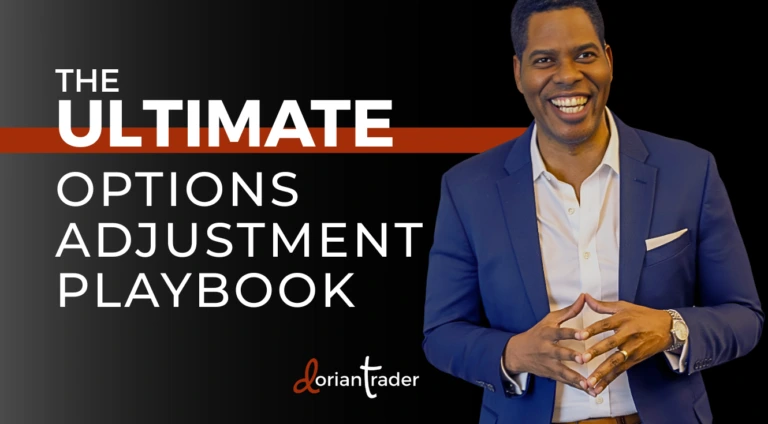DORIAN TRADER
Heavy Call Volume in Options: When It Becomes a Red Flag for Traders
Heavy call volume might look like a vote of confidence in the market. But what happens when everyone is betting on the same outcome – and that bet is wrong?

In 2025, the options market has seen a dramatic rise in short-dated speculative trades, particularly among retail traders. From tech names to meme stocks, weekly and zero-day calls are being bought at record pace. While this behavior can trigger sharp rallies, it often signals a red flag in options trading – especially when volume outpaces fundamentals. For experienced traders, spotting these warning signs is key to staying on the right side of volatility.
Understanding the Psychology Behind Heavy Call Volume
Call options give traders leveraged exposure to upside moves. When sentiment turns euphoric, it’s common to see a flood of retail call volume, especially in popular names like Tesla, Nvidia, or any stock trending on social media.
But not all call volume is created equal. When traders blindly chase weekly options, ignore volatility, and skip trade structure, the market becomes fragile. This kind of speculative behavior is a hallmark of unsustainable moves and has historically preceded sharp reversals. For those watching closely, it’s often the earliest red flag in options trading.
What Drives Heavy Call Volume?
Here are four key factors are fueling the explosion in short-term call activity:
- Wider access to 0DTE (zero-day-to-expiration) options for individual stocks
- Commission-free trading apps that make speculative trades easy to execute
- Social media hype cycles and meme stock resurgence
- Overconfidence stemming from recent short-term gains in low-volatility environments
When Call Buying Becomes a Red Flag in Options Trading
Call buying crosses into warning territory when heavy call volume outpaces logic and positioning becomes unbalanced. A few signs that should catch your attention:
![]() Unusual options activity with little or no supporting news
Unusual options activity with little or no supporting news![]() Expensive implied volatility on short-dated contracts
Expensive implied volatility on short-dated contracts![]() Call-to-put ratios exceeding 3:1 across multiple sessions
Call-to-put ratios exceeding 3:1 across multiple sessions
![]() Repeated surges in open interest that fail to lead to sustained moves
Repeated surges in open interest that fail to lead to sustained moves
In these cases, what looks like bullish momentum may actually be a crowded trade on borrowed time – a red flag in options trading that experienced traders learn to respect.
The Gamma Squeeze Trap
One of the key drivers behind sudden price surges in call-heavy environments is the gamma squeeze. When traders buy large volumes of near-the-money calls, market makers are forced to hedge by buying the underlying stock. This creates a self-reinforcing loop until it breaks. If new buyers fail to show up, market makers unwind their hedges, and prices fall fast. This unwind can erase gains in hours, turning once-profitable trades into lessons in poor timing.
A Real Example from 2025
In mid-July, Krispy Kreme (DNUT) jumped more than 35 percent over two sessions. The move was not fueled by earnings or M&A. It was powered almost entirely by speculative call buying. Within a week, the stock returned to its prior range, leaving late call buyers holding contracts that had decayed to near zero.
This is not an isolated case. Similar moves have been seen in OpenDoor, GoPro, and even large caps when retail interest and social momentum converge.
How to Respond as a Retail Trader
Seeing red flags in options trading doesn’t mean you should avoid short-dated trades entirely. It means you need a structured process and risk management framework.
Start by analyzing positioning. If the move is supported by volume, technical structure, or macro catalysts, it may still have legs. But if the move is purely options-driven, adjust your expectations and manage risk tightly.
Rather than chase naked calls, many experienced traders opt for structured positions like vertical spreads. These limit premium exposure and define maximum risk – critical in high-volatility environments.
Red Flag Checklist for Options Flow
Question | What to Consider |
Is this speculative or hedged? | Look for whether the call flow supports a larger position or stands alone. |
Is volume aligned with price action? | If price is not reacting, the flow may be noise, not conviction |
Are implied volatilities elevated? | High IV can signal emotion-driven trades. Know what you are stepping into. |
When those signals flash red, it’s time to be cautious, not reactive. Each sign alone may raise concern – but together they form a clear red flag in options trading.
Learn to manage risk by being a pro at adjusting. Check out our comprehensive course!
Build a Strategy That’s Bigger Than the Hype
Heavy call buying doesn’t automatically mean a reversal is coming, but it does mean conditions are ripe for one. If you’re serious about improving consistency, protecting capital, and navigating periods of crowd-driven volatility with confidence, trading alone isn’t the best path.
Dorian Trader’s Trading Club is built for traders who want structure – not chaos. Inside the Club, we teach practical, repeatable strategies for 1 DTE and 7 DTE trades, with daily support, real-time analysis, and a strong community that helps you stay sharp.
Want to trade with clarity and process instead of emotion? Join the Dorian Trader Trading Club and learn how to interpret options flow with precision – before the crowd reacts. Ready to commit?
When call buying becomes excessive, it’s not just noise – it’s often a clear red flag in options trading. Learn to read the signs before the unwind begins. Watch the flow. Study the price. Stay disciplined. And above all, avoid trades that look too easy to win.

